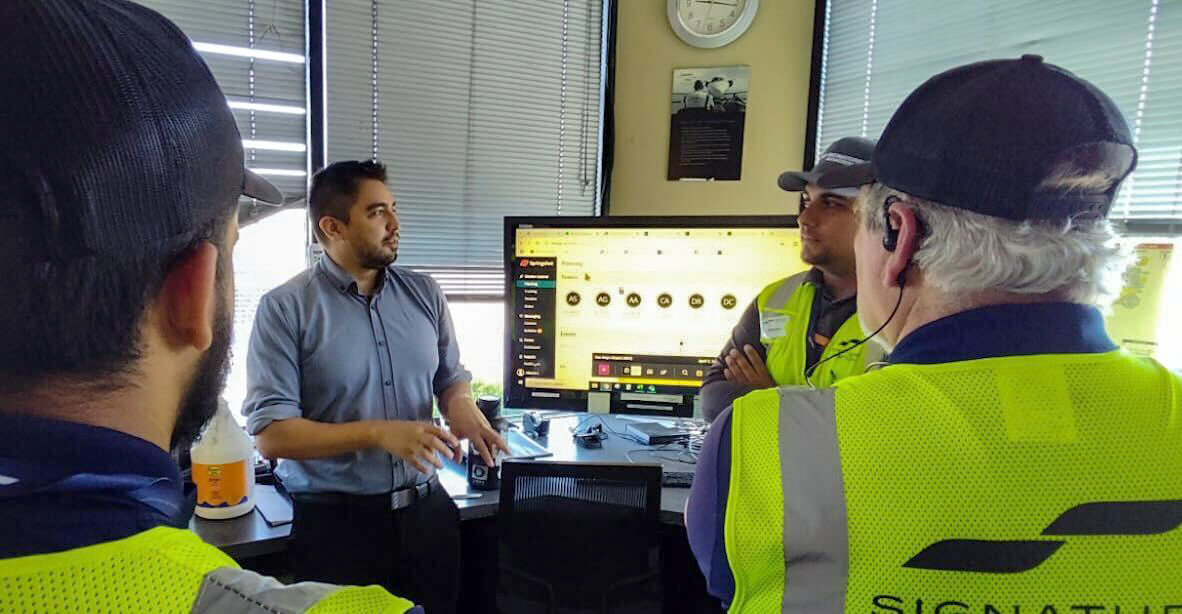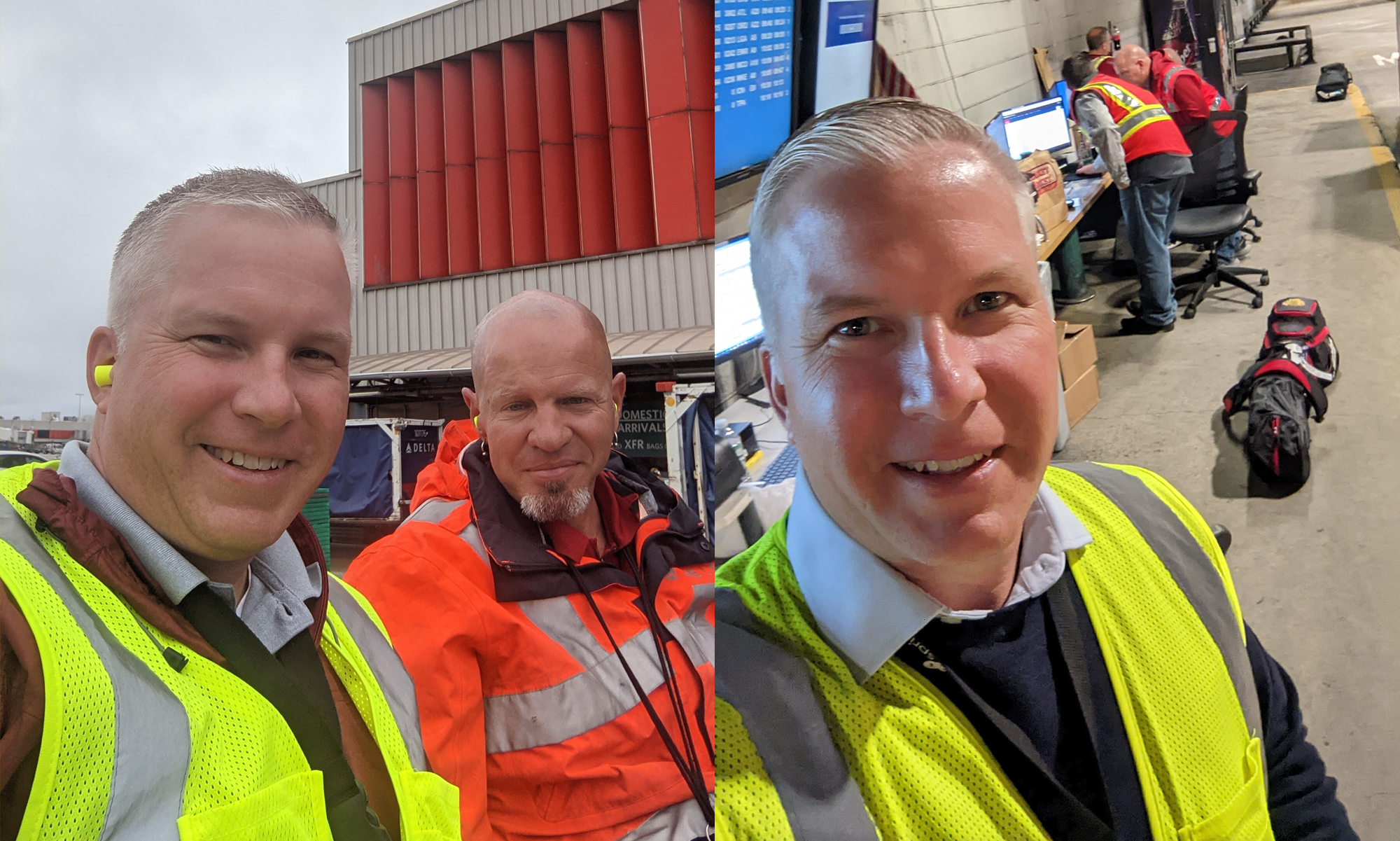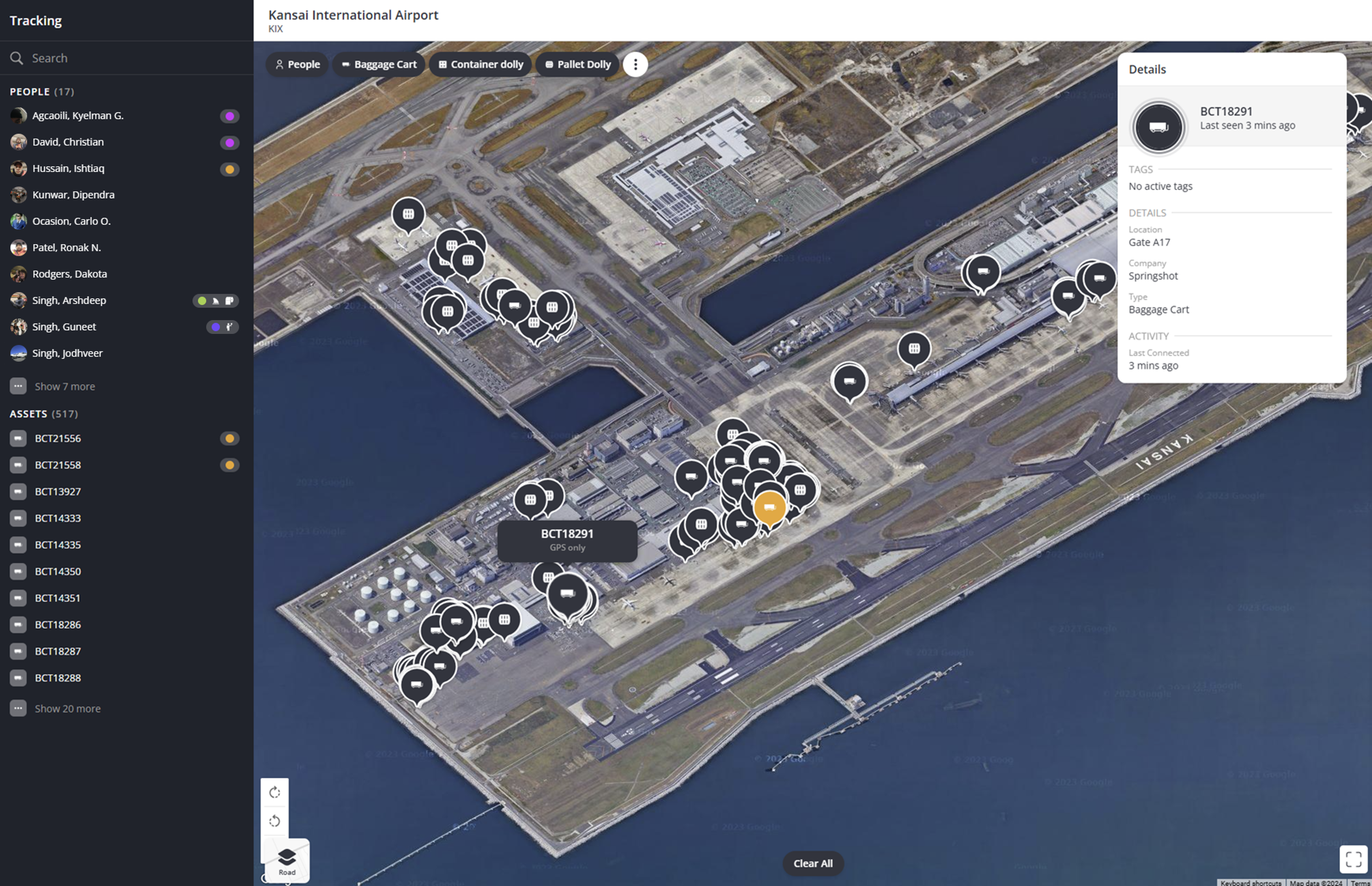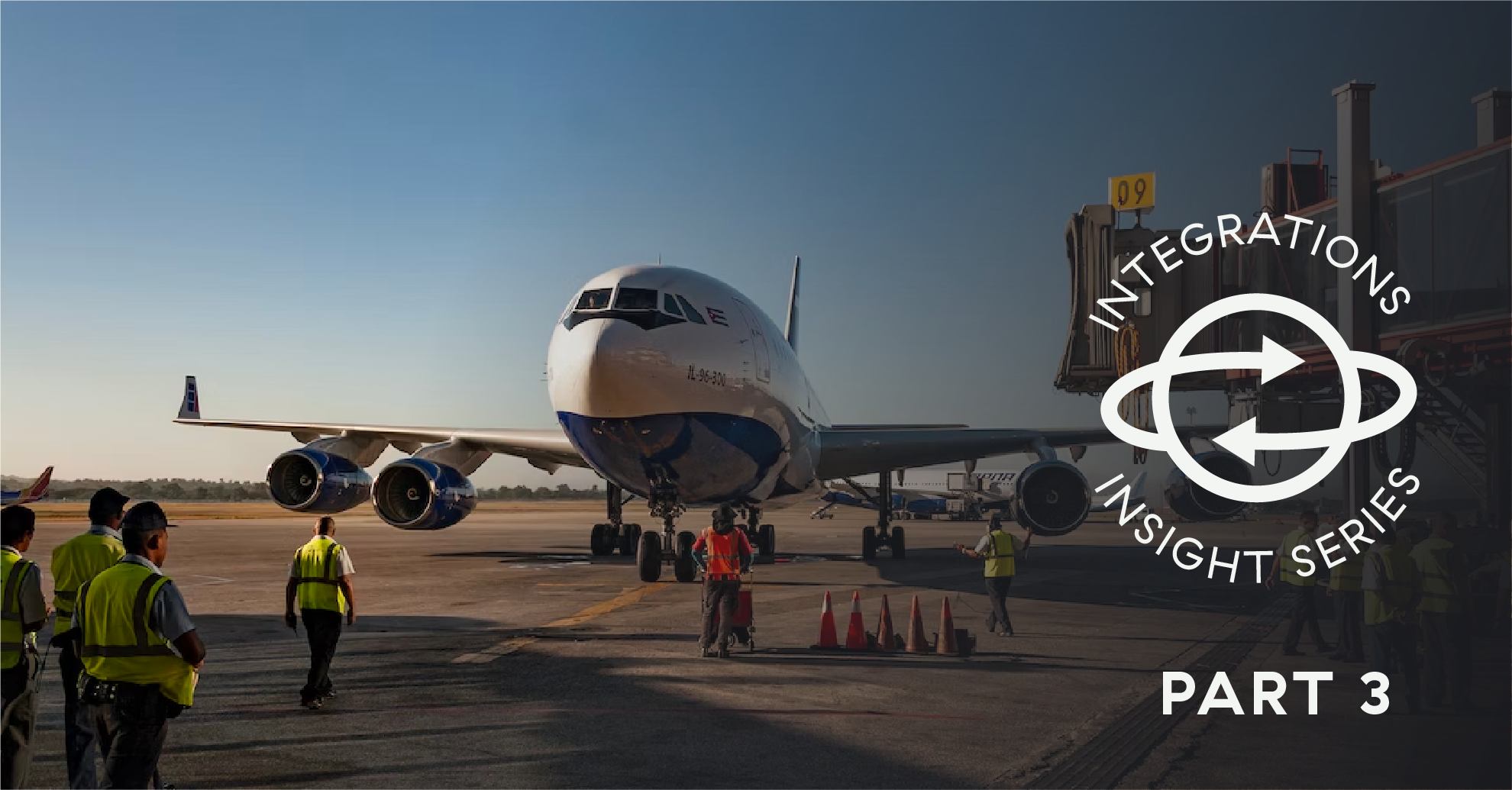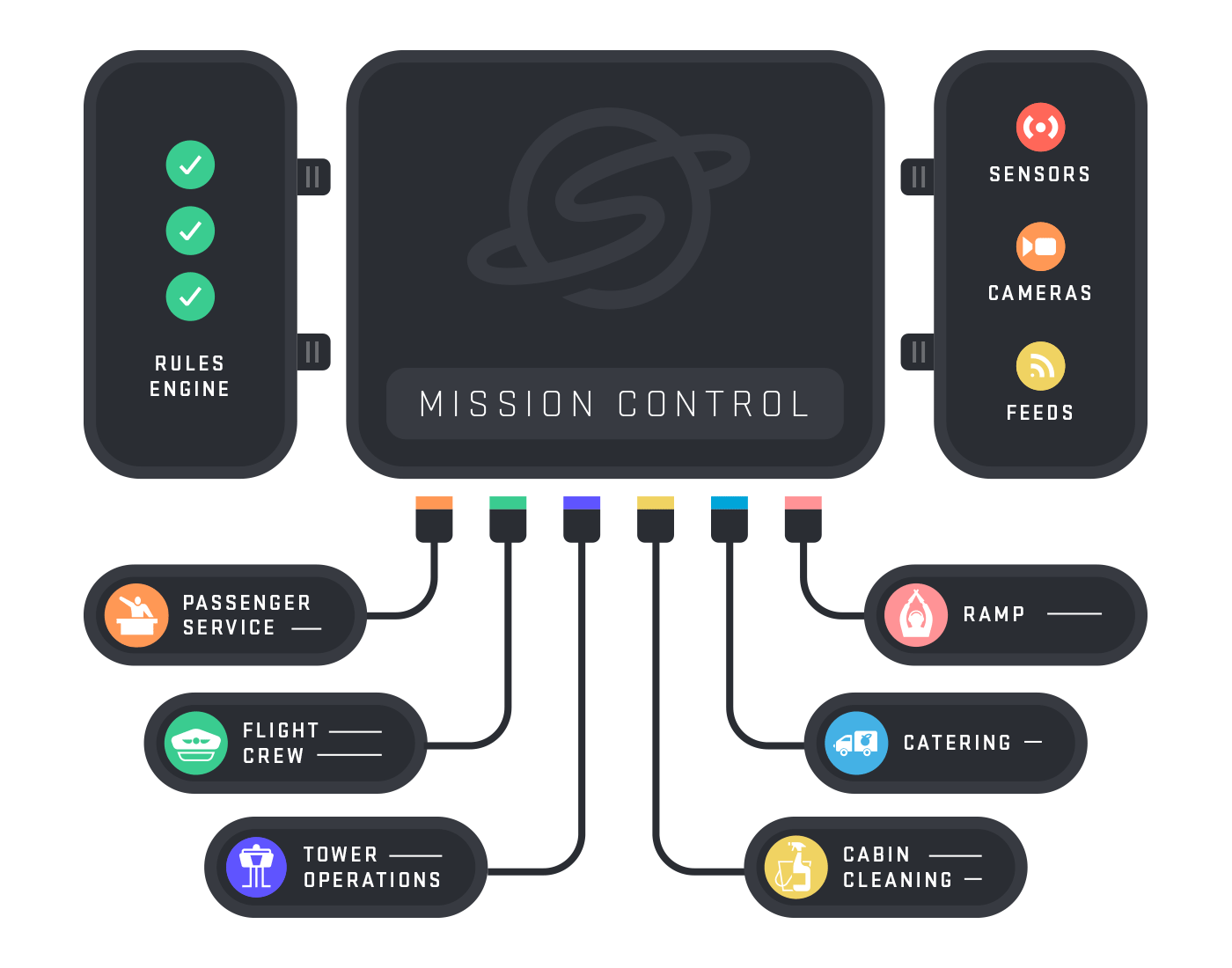The Springshot Mission
The Springshot Mission isn’t a cliché or a bunch of empty words plastered on a wall. It’s the very essence of who we are and how we operate.
At Springshot, we believe in people. We believe in humanity. We are futurists and technologists who highly value the roles that AI and robotics will progressively play in our lives. Yet, we believe the most valuable form of intelligence is human and the most important actor is the human being.
We’re living through a new industrial revolution. One that is transforming the very nature of work and the relationship between human worker and machine. As companies providing services in aviation, logistics, municipal services and other physically demanding sectors rely further upon automation and robots to perform physical tasks, the human workers who remain are overwhelmed.
An inverse relationship is growing between the quantity of tasks performed by human workers and the significance of each individual task. Technology is subsidizing many mundane tasks performed previously by human workers, but it increasingly relies upon human beings to make crucial judgment calls and perform critical tasks that are beyond the capabilities of today’s systems and machines. Systems have become so tightly wound that even the smallest human misstep could be catastrophic. It’s never been more important to ensure tight alignment between technical systems and the human workers who use them.
Springshot lives at this intersection between technology and humanity.
We are manically driven to build and support beautiful software that meaningfully connects our user community with their peers, surroundings and companion technologies. We assimilate and simplify the complex. We strive to provide our users with easy-to-use web and mobile interfaces that present the right information at the right time so they can make the right decision or take the right physical action, including through robotics and autonomous machines.
We are passionate about augmenting the mental and physical capabilities of our user community and doing so within a welcoming digital ecosystem that enhances their mental wellbeing.
Our internal culture parallels our user experience. Many of us have worked together for years. We’re particular about our culture and core beliefs. We work hard to maintain an inclusive, welcoming, patient and kind workplace that allows everyone, regardless of their background or beliefs, to positively contribute and perform at their best. If you’re self-motivated, service minded and seek a nurturing environment that provides you with autonomy to do your best work, you’ll enjoy being a part of our crew.
Your Springshot Journey
We are looking for a Senior Site Reliability Engineer to maintain reliability and performance of our SaaS platform. Over the last 13 years, we have built a strong portfolio of global aviation customers and are continuing to grow though new customer acquisition and organic growth. We are a passionate, tight-knit team who moves fast and is continuously innovating and improving our products.
Our templatized collaboration platform has been used to digitally transform the world’s most complex operational environments – including the world’s largest single-airline operation – and supports some of the world’s most marquee events, like the Super Bowl. In the process, we have delivered measurable ROI and a unique empathetic brand beloved by our users. By developing a well-differentiated product offering, we are uniquely positioned to capitalize on the accelerated pace of digital transformation within aviation, hospitality healthcare and live event operations.
Roles & Responsibilities
Interested in joining our crew? Here are a few details about what you’d expect on a daily basis:
1. Design and implement highly available and scalable systems, ensuring the reliability and performance of the company’s application and infrastructure components.
2. Collaborate with cross-functional teams to define and establish service level objectives (SLOs) and service level agreements (SLAs) for critical systems.
3. Monitor systems and applications, proactively identifying and resolving any performance bottlenecks or availability issues.
4. Develop and maintain monitoring tools, alerts and dashboards to provide visibility into system health and performance.
5. Conduct post-incident analyses to identify root causes and implement preventive measures to avoid future incidents.
6. Automate repetitive tasks and processes to improve efficiency and reduce manual intervention with the help of scripting tools like Ansible.
7. Create and maintain documentation for system architecture, configuration and troubleshooting procedures.
8. Perform capacity planning and resource allocation to ensure performance and scalability.
9. Collaborate with development teams to implement and deploy new features and enhancements, ensuring they meet reliability and performance standards.
10. Stay up to date with industry best practices, new technologies, and emerging trends in site reliability engineering.
Preferred Requirements
While not a deal-breaker, we’d prefer a candidate with the following background:
1. Strong knowledge of Linux/Unix systems and command line tools.
2. Proficiency in scripting languages such as Python, Shell, or Perl.
3. Experience with configuration management tools like Ansible or Chef.
4. Familiarity with cloud platforms like AWS, Azure or Google Cloud.
5. Understanding of networking principles and protocols (TCP/IP, HTTP, DNS, etc.).
6. Knowledge of containerization technologies (Docker, Kubernetes) and orchestration tools.
7. Expertise in monitoring and logging tools such as Prometheus, Grafana, ELK stack or Splunk.
8. Strong problem-solving and troubleshooting skills, with the ability to analyze and resolve complex technical issues.
9. Excellent communication and collaboration skills to work effectively with cross-functional teams.
10. Strong attention to detail and ability to work in a fast-paced, dynamic environment.
Details
We can share more over a call, but here’s what you could generally expect as a member of the Springshot crew:
1. An attractive and competitive base salary.
2. An attractive and competitive benefits package.
3. Stock options.
4. A flexible work from home policy. While we prefer candidates based in the San Francisco Bay Area who are interested in collaborating with us in person from time-to-time in our San Francisco headquarters, you can work from anywhere.
5. Lots of autonomy. Even though we’re 13 years old, we’re happily led by our founding team and remain lean and scrappy. We don’t micromanage.
To inquire further about this new and exciting role, please email us at: careers@springshot.com
